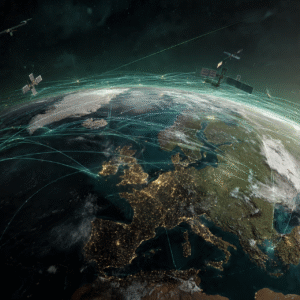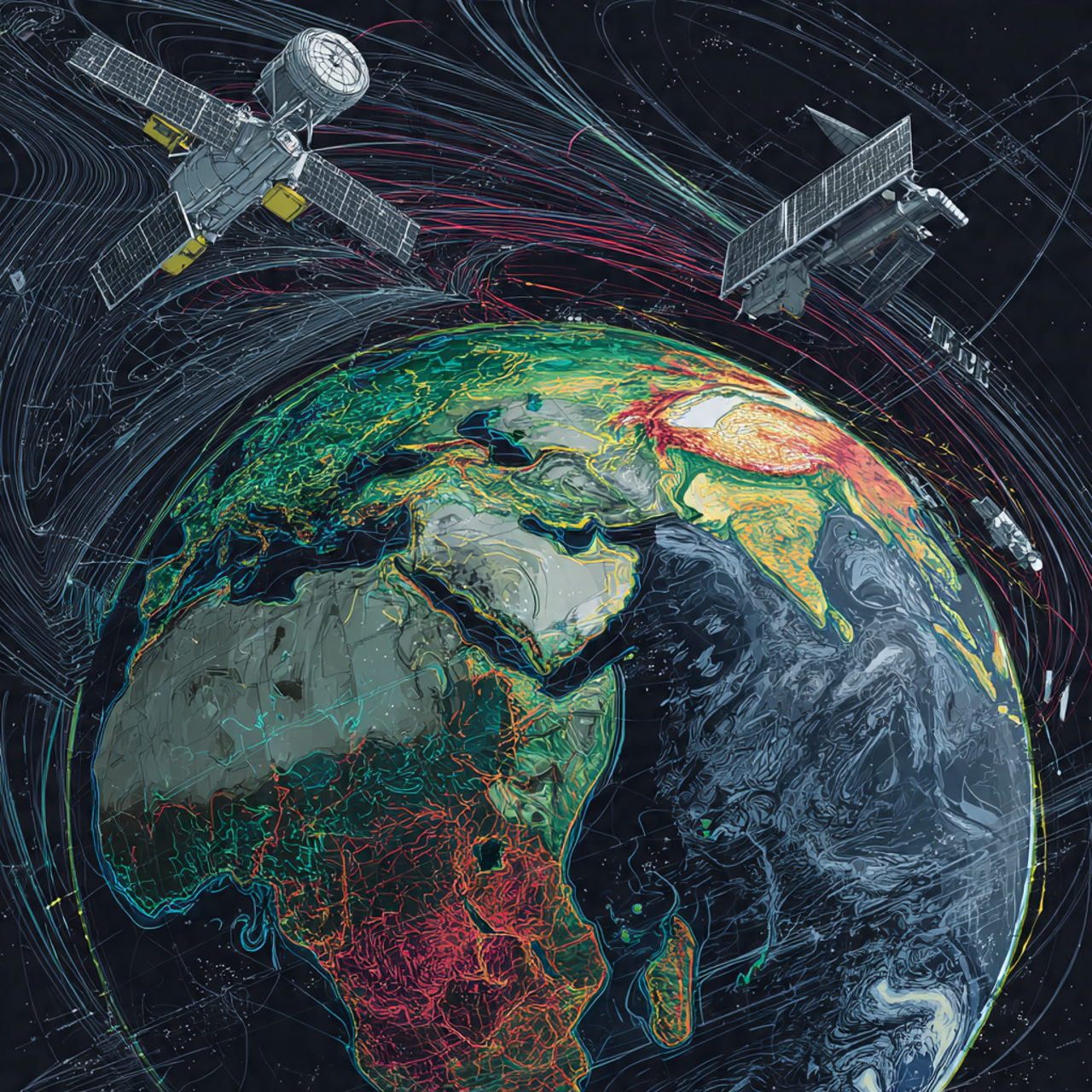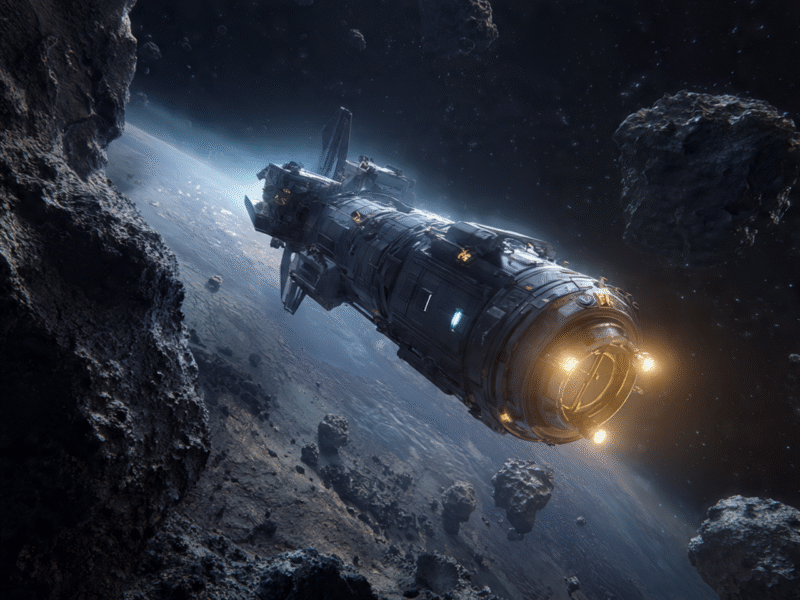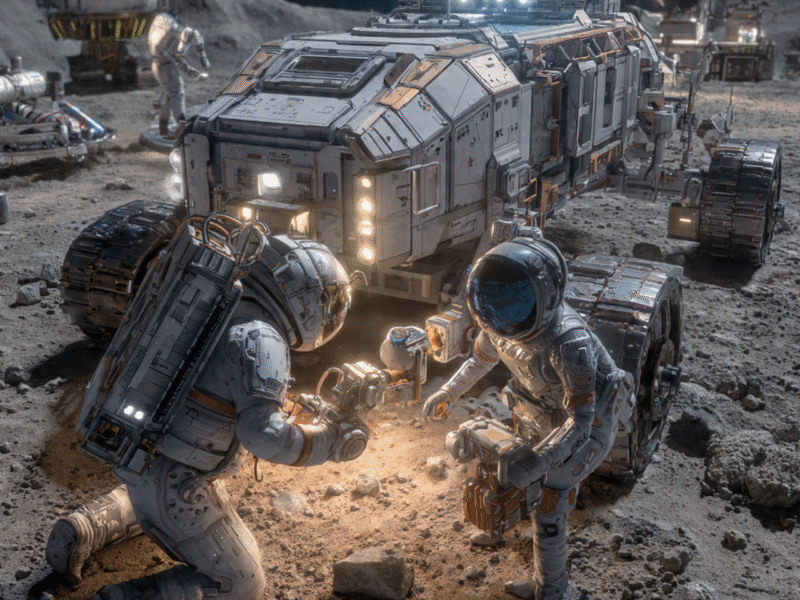➤ Introduction: Earth’s New Modern Dress: Satellite Constellations

Have you ever noticed that our Earth has been covered with a new “digital thermal blanket”? This blanket is not an ordinary blanket, but a network made of thousands of small satellites that are orbiting the Earth all the time. It has been named “satellite constellations”. This is not just a science fiction story, but a reality that is changing our daily lives. Imagine, when you are at the heights of the Himalayas or in the middle of the Atlantic Ocean, your mobile phone can instantly contact a person sitting in any corner of the world. This miracle has been made possible thanks to satellite constellations. This system has not only revolutionised communication, but is also playing an important role in our daily movements, weather forecasting, and monitoring environmental changes. In this article, we will explore the myriad aspects of this technology in detail and try to understand how it is changing our world.
✸ The limitations of the old world and the new web: What was the problem?
Our traditional communication system was like a giant tree. There were huge towers on the ground and signals were transmitted through wires. But there was a fundamental problem: geographical barriers. Mountains, deep oceans, deserts and remote forests were areas where these towers could not reach. Similarly, navigation systems like GPS relied on only a few dozen satellites, which made it difficult to determine the position inside buildings or in deep valleys. We also had limited data for weather forecasting. These were the fundamental problems that forced scientists to think about whether the Earth could be given a new “digital thermal blanket”?
◈ The billion-dollar web: How do constellations work?
The idea of satellite constellations is very simple, but its implementation is very complex. It consists of hundreds or thousands of small satellites of the same type placed in orbit around the Earth in a specific order, like a beehive. Together, they form a wireless network. When you send data from your phone, that signal reaches the nearest satellite. That satellite then transmits that signal through other satellites in the constellation, until it reaches a “ground station” on Earth that connects it to the global Internet. The whole process happens in a matter of seconds and has the advantage that the signal does not have to deal with the curvature of the Earth, but rather passes straight over it.
➲ A revolution in communications: every person in every village is a resident of the ‘global village’
In the past, if you were on the top of the Himalayas or on a boat in the middle of the Atlantic Ocean, you would be cut off from the world. Now this problem is gone. Satellite constellations have connected every person, no matter where they are in the world, to high-speed internet. It is not limited to video calls or social media. Its effects are profound. Now a doctor in a remote village can watch a live operation by the best surgeon in the world. A small farmer can get advice from agricultural experts by showing a live video of his field. This system is breathing new life into every field, from education to health to business.
➾ New generation navigation: Much more accurate than where you are
Today’s GPS systems can tell your location with a difference of a few meters. But with new satellite constellations, this accuracy will reach a few centimetres. This means that your car will be able to automatically park in a parking lot where it is difficult for even a human driver to find a space. Air plane routes will become safer. But its biggest advantage is “time measurement”. These satellites are so accurate that they are redefining global time, revolutionising fields such as banking, the stock market, and scientific research.
❂ Keeping an eye on the weather and the environment: Earth’s ‘vital signal’
Satellite constellations are not just for our communication, they have become ‘space doctors’ monitoring the health of our planet. These satellites are collecting data from every part of the Earth at every moment. They not only predict rainfall and temperature, but can also measure groundwater levels, the smallest flames in forest fires, temperature changes in the oceans, and even the smallest particles of carbon dioxide in the air. Thanks to this data, we can greatly reduce the damage caused by disasters such as hurricanes, floods, and droughts.
⧖ Space Traffic Jam: A New Challenge
With so many satellites being launched into space, a new problem is emerging: space junk. These broken satellites, rocket parts, and other debris are rapidly orbiting Earth, posing a threat to new satellites and space stations. Scientists are now looking for ways to clean up this space junk, such as catching it in giant nets or using lasers to deflect it. It’s a new war being fought in space.
⬡ A glimpse into the future: When satellites can read our minds
The trend won’t stop there. In the near future, satellite constellations will work together with artificial intelligence (AI). They will not only collect data, but also analyze it and make decisions. For example, an AI-equipped satellite will observe a traffic jam in a major city and immediately determine alternative routes and send a notification to every vehicle about it. Or it could detect a forest fire and automatically call the fire brigade for help, indicating the possible paths it could take.
✣ Conclusion: A dream of a connected humanity
Satellite constellations are not just technology, they are a means of uniting humanity. They are leading us towards a world where knowledge, health, and opportunity are within everyone’s reach, regardless of the region they live in. They are transforming our Earth into a living, breathing ‘smart planet’. This journey has just begun, and its possibilities are endless.
⦿ Last but not least: Our responsibility
With this powerful technology in our hands, our responsibility also increases. We must ensure that it is used for the betterment of humanity and the protection of the Earth. We have to keep the space environment clean and use this technology for peace and development. This is a decision for our future.


